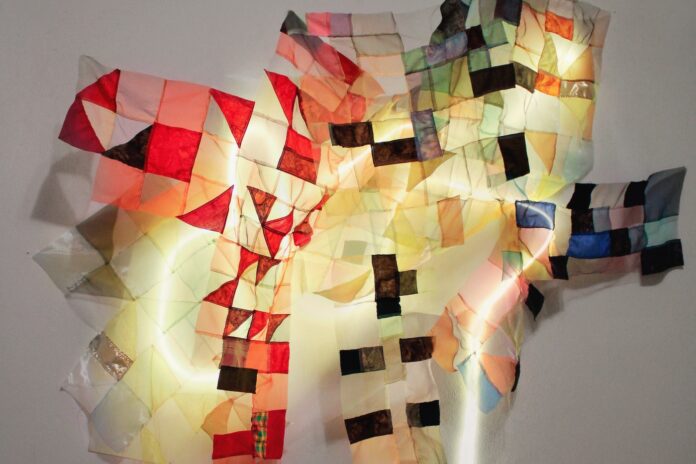Artist Holly Wong is driven by a love of pattern, and the mystery and symbolism found within it. Her process involves the act of sewing, constructing, then deconstructing and forming again, in a cycle of renewal and rebirth.
Textile art is one of Wong’s touchstones: The sculptures of Sheila Hicks, which emphasize color, natural materials, innovative handling, and personal narratives, are a personal inspiration. Wong is also moved by the works of painters and installation artists who incorporate intensive surface design in their work. Her installations, “Phoenix” and “Thought Traveler” demonstrate a frequent overlapping of drawing, painting and sewing.
Like many artists, she was creative as a child and loved to paint and draw. As a young adult, she found that creative work was a way to understand her personal history and to process the more troubling aspects of her life. What began initially as an exploratory discipline to improve herself and her craft has become a daily obsession.
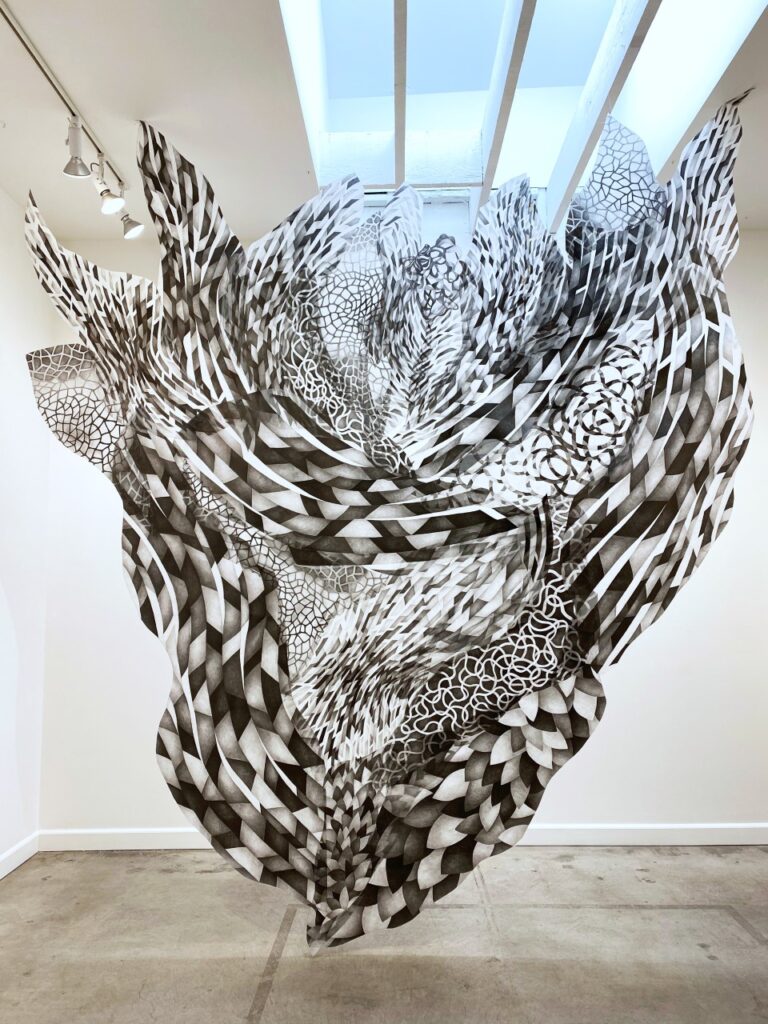
“The art practice is the key to keeping whole, healthy, and optimistic about my life. It resolves feelings of anxiety and helps me to feel purposeful and realized as a person,” Wong told 48hills.
Wong grew up in Miami and came to San Francisco in 1989 for college, completing both her BFA (1993) and MFA (1995) at the San Francisco Art Institute, with a concentration in the field of “New Genres.” Lately, Wong has become obsessed with experimental film and video installation through the influence of her husband, Al Wong, active in the industry for many years. She does outreach to promote her husband’s art practice of 50 years through scholarship and creation of a catalog archive.
In graduate school, she engaged in single-channel video and performance, which penetrates her methods and materials as well. She is most driven by combining multi-discipline practices with installation work and the moving image.
Rising daily at 2am, Wong says she does her best work while the house is quiet and still, devoting at least 25 hours of studio work per week. It’s a delicate balance with the demands of family and a day job as a finance administrator for UCSF Alliance Health Project.
“Every time I go to the studio, I can’t wait to see what is going to happen next!” she said.
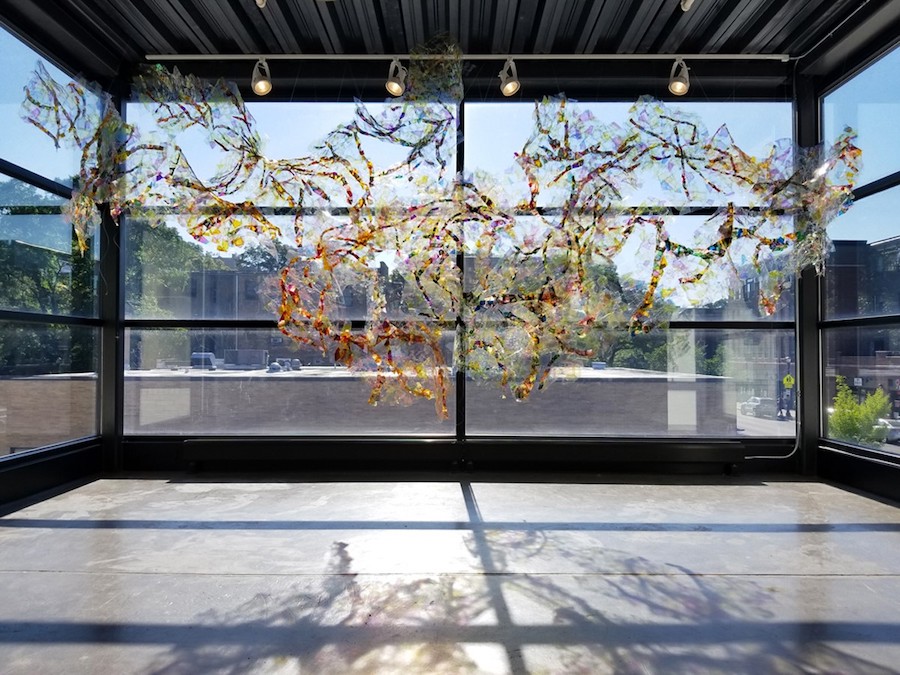
Manipulating synthetic materials such as cellophane and dichroic film with natural fibers of silk and cotton, Wong is drawn to quilted or pieced fabrics as a proxy for the body, as quilt-making was one of few creative spaces women were permitted to operate in for several hundred years in the United States.
“Initially valued for its utility, quilting became a way that women told the stories of their lives and shared community with each other,” Wong said.
Thus, using the language of quilting, Wong participates in its rich history while stretching into new and different areas. She doesn’t believe the craft is solely about fabric and views it more broadly as a reconnecting of that which was previously fragmented. The act of mending and rebuilding is central to both her process and her life. Wong likes to work large with an intention to envelope and encompass and is deeply satisfied when an artwork becomes an immersive experience.
“I know when a piece is done when it has a balance of emotional power, visual complexity, and fully realized physical presence,” she said.
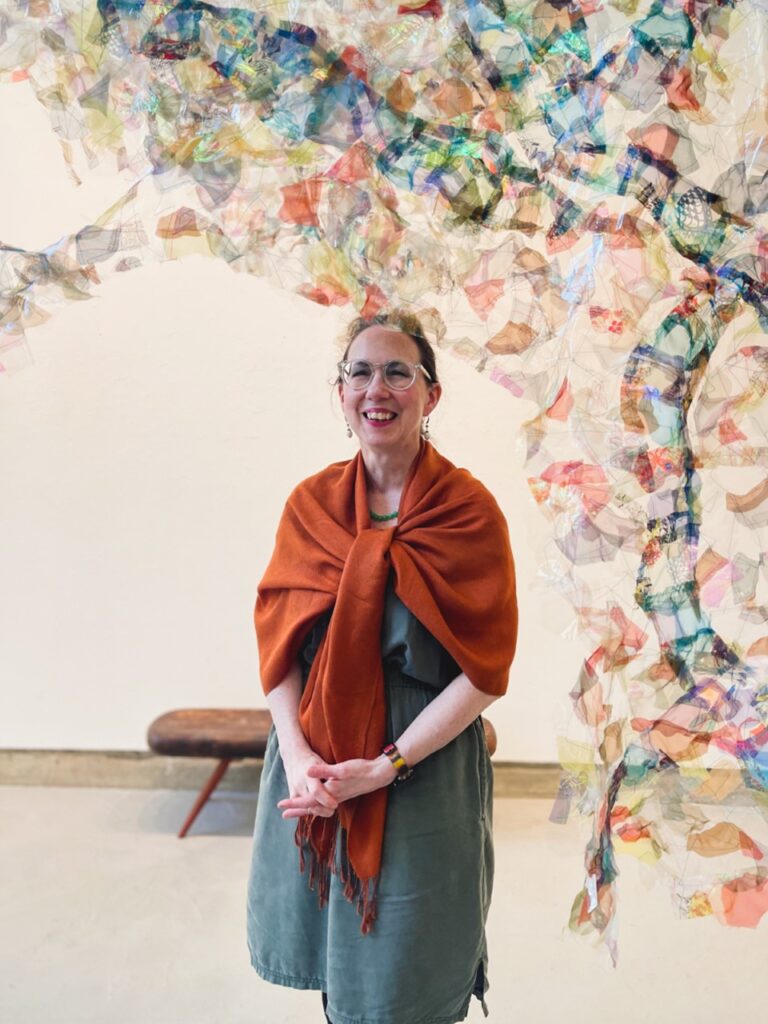
Since finishing her MFA, Wong’s work has migrated back and forth from painting and drawing to large scale fiber-based installations. Much of her earlier work spoke to social or political issues in a more didactic fashion, relating a story about the history of violence against women, specifically the use of rape as a tool of war and genocide.
“My work was externally focused but as I changed as an artist over time, I realized that I had to invert this to instead tell my own stories in a way that was more universal to the experiences of viewers,” Wong said.
She began to think more broadly about feminism and what it meant to her in the sense of the body as battle ground in contemporary culture. She uses the act of making works that are cut and restructured to describe the female body and the ways in which it is defined as impure, imperfect, and never enough. Wong’s installations, “Silent Music” and “Guardian of the Spirits” both demonstrate a kind of evolution toward accepting her body and celebrating it.
“My artmaking becomes a form of reclaiming and honoring the body and my integration of materials, over the past five years in particular, is a part of that process,” she said.
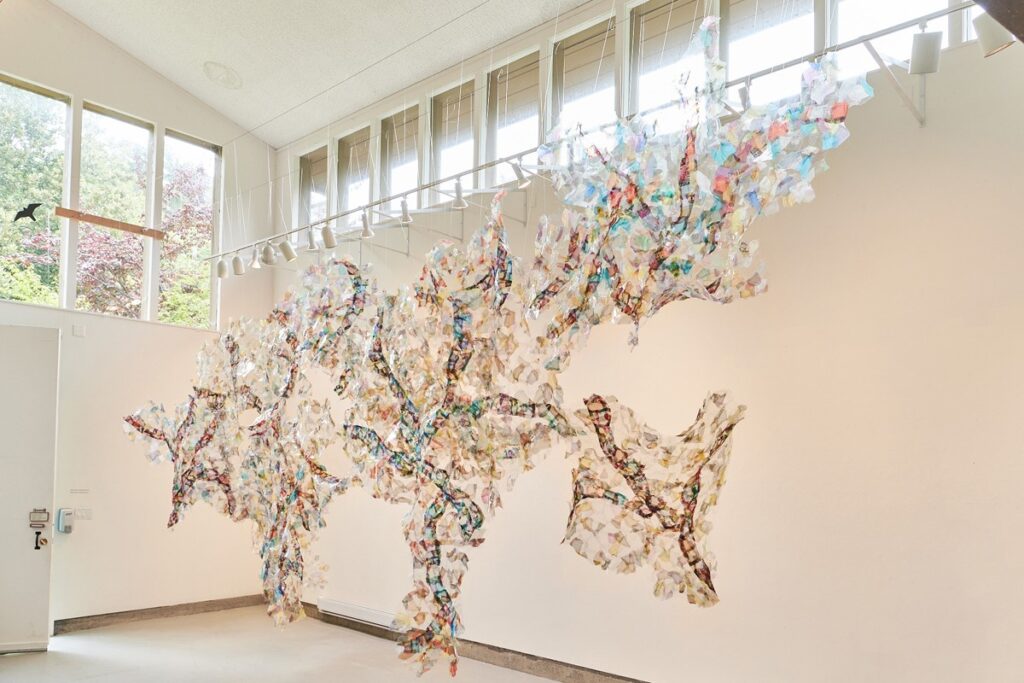
For Wong, recent social issues have expanded her understanding of events and her place in them. The pandemic was a time of extreme studio focus while the death of George Floyd was pivotal. “The summoning of a national discussion about structural racism and its violence within U.S. institutions against communities of color caused me to start thinking more deeply about my own White privilege,” Wong said.
It was also deeply saddening for her to see how sharply escalated Asian hate crimes impacted her husband, a Chinese American. “Entrenched racism, sexism, and violence against other vulnerable communities have always existed in American society but the violent and very public murder of George Floyd made it far more challenging for those who deny its existence,” she said.
Given all of these realizations, Wong felt the need to elevate the voices of artists of color both within her personal circle and in a broader sense.
“Artists often focus on promoting themselves and it is much more important to realize that we are working in a visual ecosystem, we can help each other, and the pie is large enough to share,” she said.
Wong is preparing for two major exhibitions in 2023 which will involve installations and video projection. New works integrate felled seam sewing techniques, quilting, and burning, along with the creation of new soft sculptures using sewn-in corset boning to give the work more physicality.
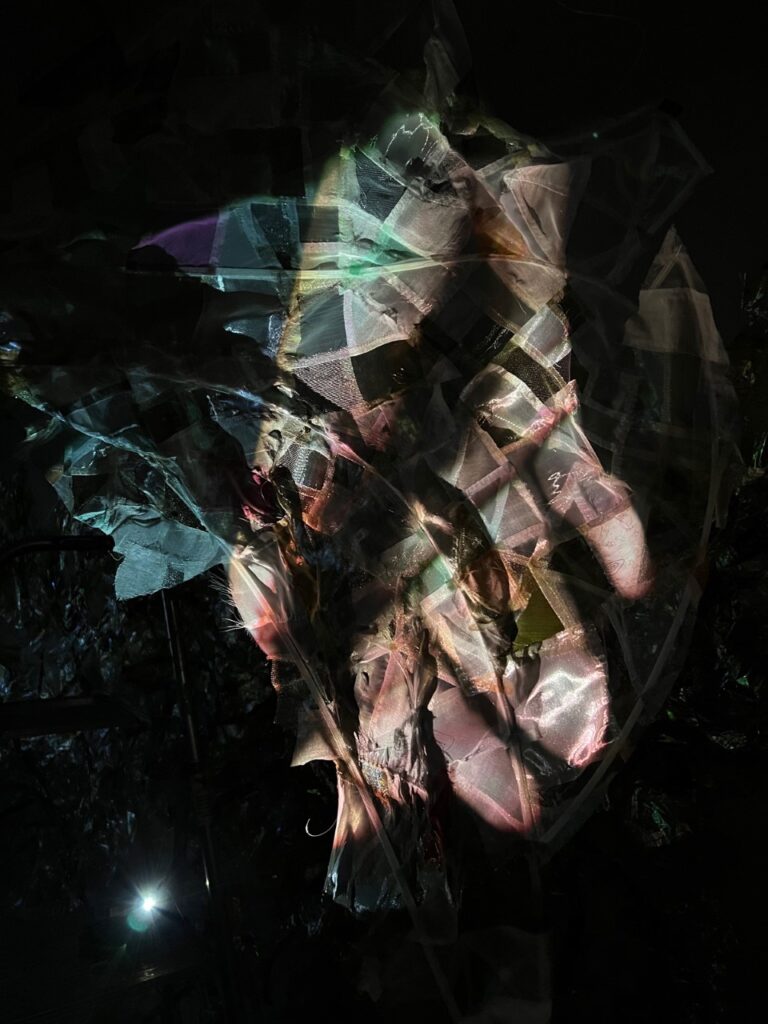
A video documentation by Wong of hands “speaking” in American Sign Language will be projected onto the sewn sculptures. Pieced, light reflective fabric becomes a kind of cinema screen, while also maintaining a malleable and flexible presence. “Mending Body/Mending Mind” are examples of this work-in-progress.
Artist Holly Wong hopes that people will have a strong emotional response, a feeling of wonder, and a sense of spiritual renewal when viewing her work. Ultimately, she hopes it brings healing and reconnection. She encourages other artists to recognize the practice as sacred and a source of joy, to celebrate the knowledge and successes of others, and “grow your own garden.”
Represented by SLATE Contemporary in Oakland, ELLIO Fine Art in Houston, Texas, and A.I.R. Gallery in Brooklyn, New York, Wong has numerous solo and group exhibitions scheduled for 2023 across California, Colorado, Kentucky, New York, and Hawaii.
For more information, visit her website at hollywongart.com and on Instagram.

